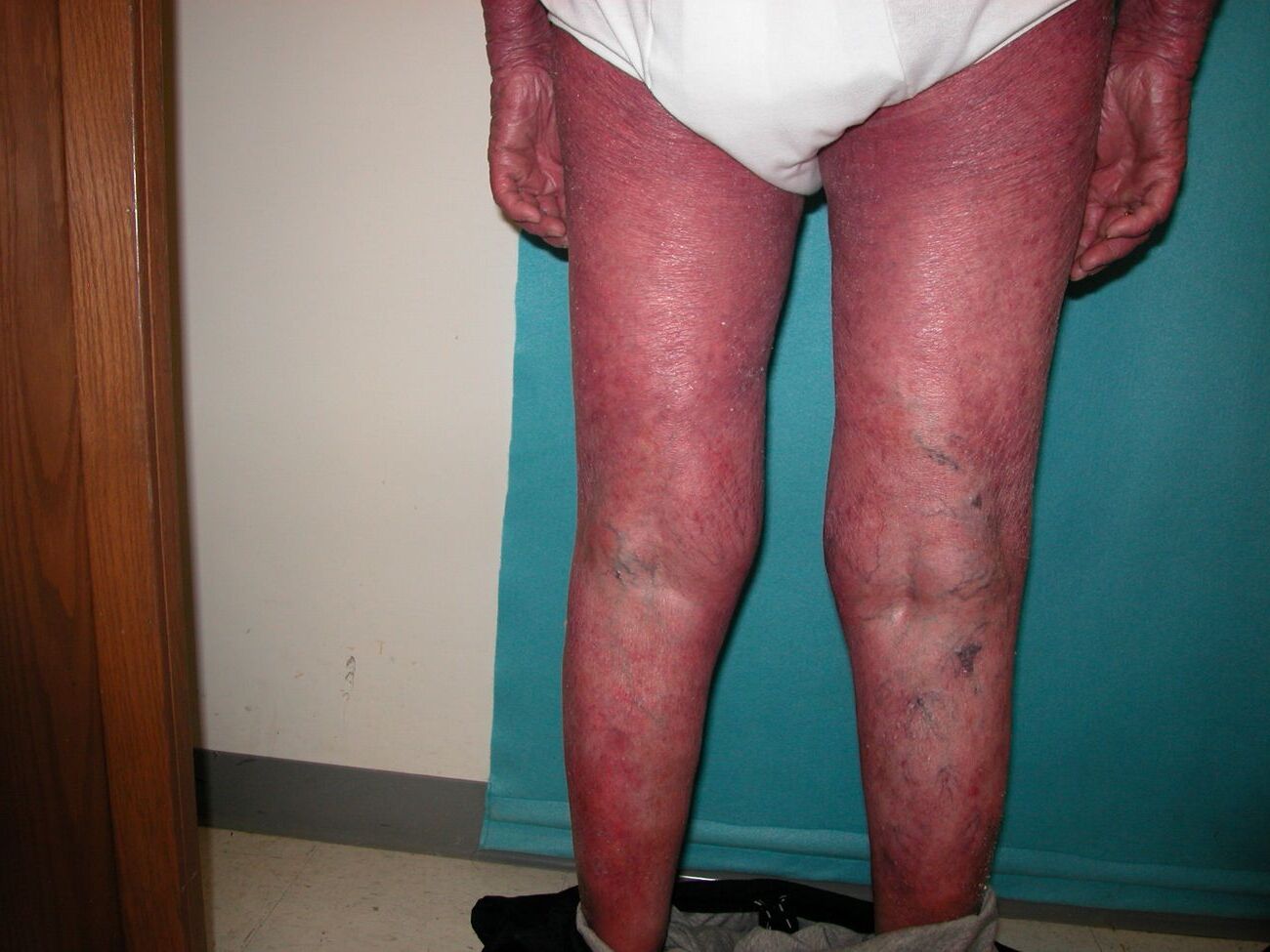
Exfoliative dermatitis is a serious skin condition that can leave you feeling uncomfortable and concerned. But what exactly is it? Exfoliative dermatitis is a widespread inflammation of the skin, causing redness, scaling, and shedding of the outer skin layer. This condition can result from various underlying issues like psoriasis, eczema, or even a reaction to certain medications. Understanding the symptoms, causes, and treatments is crucial for managing this condition effectively. In this blog post, we will dive into 40 facts about exfoliative dermatitis to help you better grasp what it entails and how to handle it. Whether you're dealing with it yourself or supporting someone who is, these facts will provide valuable insights.
Key Takeaways:
- Exfoliative dermatitis is a severe skin condition causing redness, scaling, and peeling. It can be triggered by various factors and may lead to serious complications if not treated promptly.
- Managing exfoliative dermatitis involves addressing the underlying cause, relieving symptoms, and preventing complications. Support networks and resources are available to help those affected by this challenging condition.
What is Exfoliative Dermatitis?
Exfoliative dermatitis is a severe skin condition characterized by widespread redness, scaling, and peeling. It can be a result of various underlying causes, including pre-existing skin disorders, drug reactions, or systemic diseases. Here are some fascinating facts about this condition.
-
Exfoliative dermatitis affects the entire skin surface, leading to extensive peeling and shedding of the skin.
-
The condition can cause the skin to appear red and inflamed, often resembling a severe sunburn.
-
It is sometimes referred to as erythroderma, which means "red skin."
-
Exfoliative dermatitis can be life-threatening if not treated promptly due to complications like infection and fluid loss.
Causes of Exfoliative Dermatitis
Understanding the causes of exfoliative dermatitis is crucial for effective treatment. The condition can stem from various sources.
-
Pre-existing skin conditions like psoriasis or eczema can trigger exfoliative dermatitis.
-
Drug reactions are a common cause, with medications like penicillin and sulfonamides being frequent culprits.
-
Certain cancers, such as lymphoma and leukemia, can also lead to exfoliative dermatitis.
-
In some cases, the exact cause remains unknown, making diagnosis and treatment more challenging.
Symptoms of Exfoliative Dermatitis
Recognizing the symptoms early can help in managing the condition effectively. The symptoms are often severe and widespread.
-
Intense itching is a common symptom, often leading to discomfort and sleep disturbances.
-
The skin may feel tight and painful due to extensive inflammation.
-
Swelling of the lymph nodes can occur as the body reacts to the widespread skin inflammation.
-
Hair loss is another symptom, as the condition affects the scalp and other hairy areas.
Diagnosis of Exfoliative Dermatitis
Accurate diagnosis is essential for appropriate treatment. Several methods are used to diagnose exfoliative dermatitis.
-
A thorough medical history and physical examination are the first steps in diagnosing the condition.
-
Skin biopsies can help identify the underlying cause by examining skin tissue under a microscope.
-
Blood tests may be conducted to check for infections or other systemic conditions.
-
Patch testing can determine if an allergic reaction is causing the dermatitis.
Treatment Options for Exfoliative Dermatitis
Treatment aims to address the underlying cause and relieve symptoms. Various approaches are used depending on the severity and cause.
-
Topical steroids are commonly prescribed to reduce inflammation and itching.
-
Systemic steroids may be necessary for severe cases to control widespread inflammation.
-
Moisturizers and emollients help keep the skin hydrated and reduce peeling.
-
Antibiotics may be needed if there is a secondary bacterial infection.
Complications of Exfoliative Dermatitis
If not managed properly, exfoliative dermatitis can lead to several serious complications.
-
Dehydration is a significant risk due to fluid loss through the damaged skin.
-
Infection is a common complication, as the skin's protective barrier is compromised.
-
Hypothermia can occur because the skin's ability to regulate temperature is impaired.
-
Malnutrition may develop if the body's increased metabolic demands are not met.
Living with Exfoliative Dermatitis
Managing daily life with exfoliative dermatitis can be challenging. Here are some tips to help cope with the condition.
-
Wearing loose, soft clothing can reduce irritation and discomfort.
-
Avoiding hot showers and harsh soaps helps prevent further skin damage.
-
Keeping the skin moisturized is crucial to manage dryness and peeling.
-
Regular follow-ups with a dermatologist ensure proper management and monitoring of the condition.
Research and Future Directions
Ongoing research aims to improve understanding and treatment of exfoliative dermatitis. Here are some exciting developments.
-
New biologic therapies are being explored to target specific pathways involved in inflammation.
-
Advances in genetic research may help identify individuals at risk for developing the condition.
-
Improved diagnostic tools are being developed to quickly and accurately identify the underlying cause.
-
Patient education programs are being implemented to help individuals manage their condition effectively.
Interesting Facts about Exfoliative Dermatitis
Here are some lesser-known facts that highlight the complexity and impact of exfoliative dermatitis.
-
The condition can affect people of all ages, from infants to the elderly.
-
Men are slightly more likely to develop exfoliative dermatitis than women.
-
Stress can exacerbate the symptoms, making management more difficult.
-
The condition can sometimes resolve on its own if the underlying cause is identified and treated.
Support and Resources for Exfoliative Dermatitis
Support networks and resources can provide valuable assistance to those affected by exfoliative dermatitis.
-
Support groups offer a platform for sharing experiences and coping strategies.
-
Online forums and communities provide access to information and support from others with the condition.
-
Dermatology clinics often have resources and educational materials for patients.
-
Non-profit organizations dedicated to skin conditions can offer financial assistance and advocacy for patients.
Final Thoughts on Exfoliative Dermatitis
Exfoliative dermatitis, a severe skin condition, demands attention. It causes widespread redness, peeling, and discomfort. Early diagnosis and treatment are crucial for managing symptoms and preventing complications. Treatment often includes topical steroids, oral medications, and sometimes hospitalization. Identifying underlying causes, like drug reactions or existing skin conditions, helps tailor the treatment plan.
Living with exfoliative dermatitis can be challenging, but support from healthcare providers and loved ones makes a difference. Regular follow-ups and adherence to treatment plans improve outcomes. Staying informed about the condition empowers patients to manage their health better.
Remember, if you or someone you know shows signs of exfoliative dermatitis, seek medical advice promptly. Early intervention can significantly impact the quality of life. Stay proactive, stay informed, and prioritize skin health.
Frequently Asked Questions
Was this page helpful?
Our commitment to delivering trustworthy and engaging content is at the heart of what we do. Each fact on our site is contributed by real users like you, bringing a wealth of diverse insights and information. To ensure the highest standards of accuracy and reliability, our dedicated editors meticulously review each submission. This process guarantees that the facts we share are not only fascinating but also credible. Trust in our commitment to quality and authenticity as you explore and learn with us.


